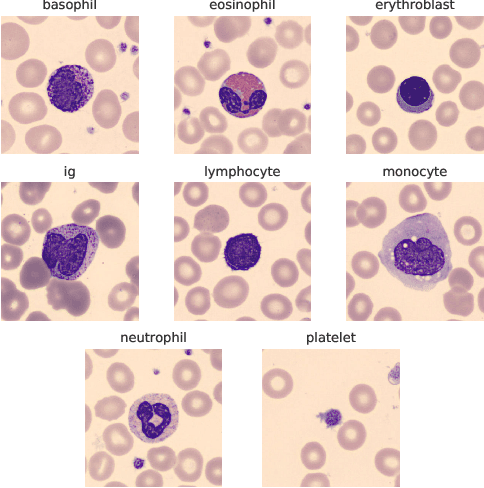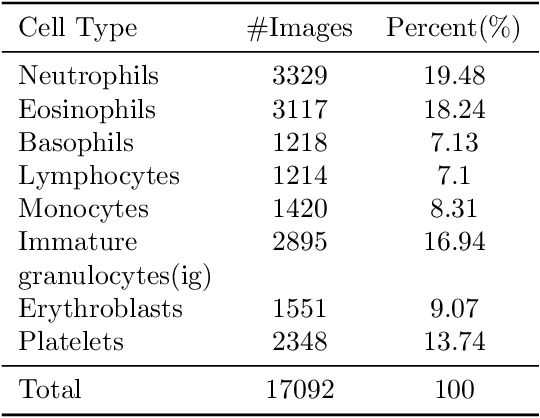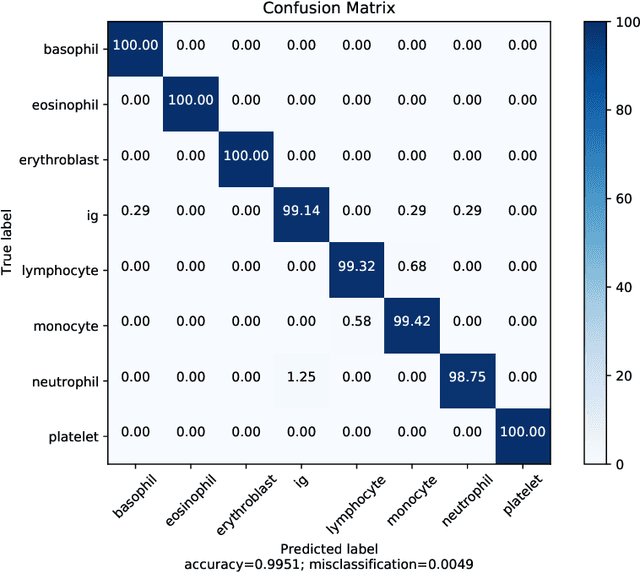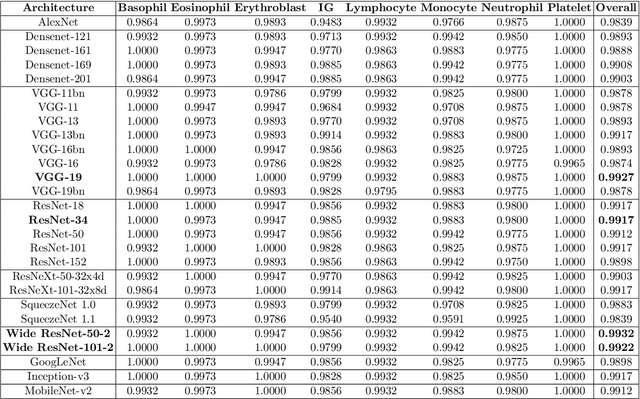Deep CNNs for Peripheral Blood Cell Classification
Paper and Code
Oct 18, 2021



The application of machine learning techniques to the medical domain is especially challenging due to the required level of precision and the incurrence of huge risks of minute errors. Employing these techniques to a more complex subdomain of hematological diagnosis seems quite promising, with automatic identification of blood cell types, which can help in detection of hematologic disorders. In this paper, we benchmark 27 popular deep convolutional neural network architectures on the microscopic peripheral blood cell images dataset. The dataset is publicly available, with large number of normal peripheral blood cells acquired using the CellaVision DM96 analyzer and identified by expert pathologists into eight different cell types. We fine-tune the state-of-the-art image classification models pre-trained on the ImageNet dataset for blood cell classification. We exploit data augmentation techniques during training to avoid overfitting and achieve generalization. An ensemble of the top performing models obtains significant improvements over past published works, achieving the state-of-the-art results with a classification accuracy of 99.51%. Our work provides empirical baselines and benchmarks on standard deep-learning architectures for microscopic peripheral blood cell recognition task.
 Add to Chrome
Add to Chrome Add to Firefox
Add to Firefox Add to Edge
Add to Edge